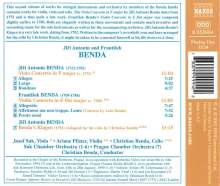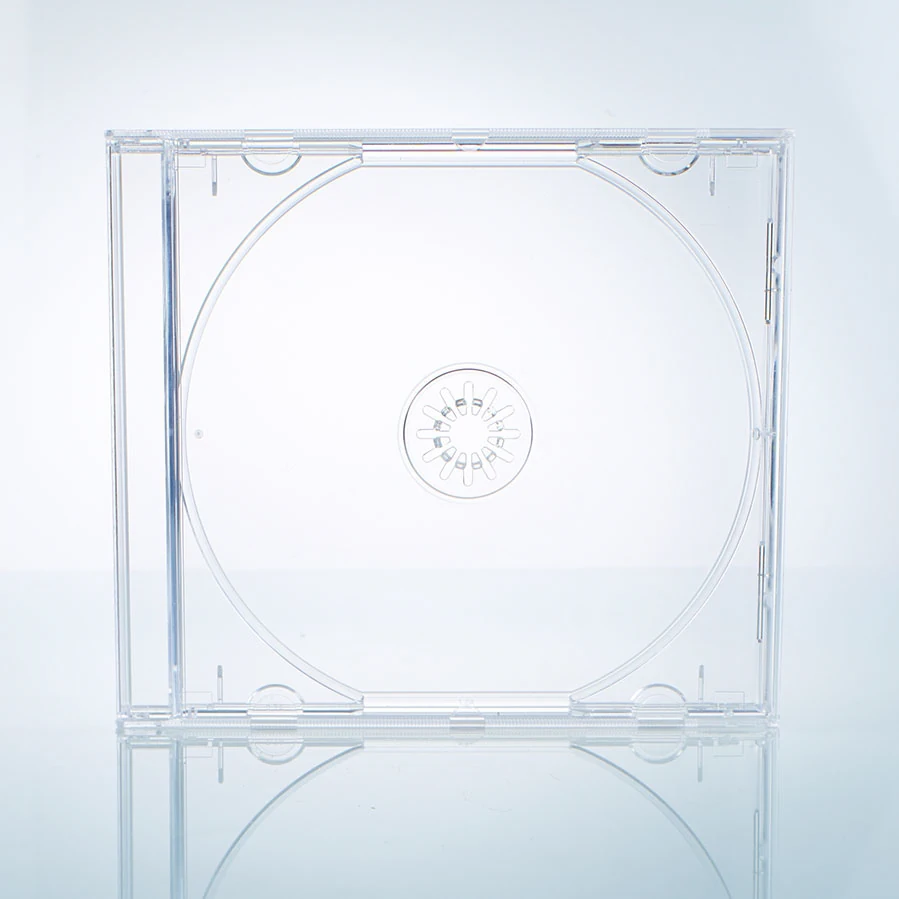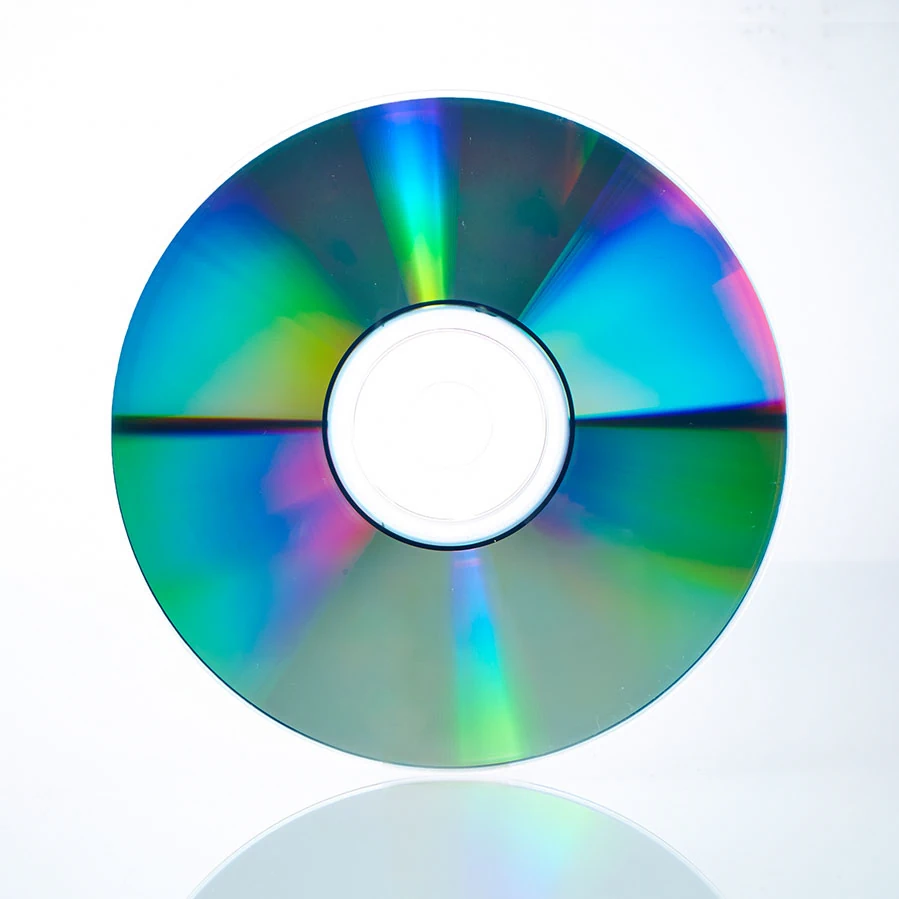Georg Anton Benda: Violakonzert in F auf CD
Violakonzert in F
Herkömmliche CD, die mit allen CD-Playern und Computerlaufwerken, aber auch mit den meisten SACD- oder Multiplayern abspielbar ist.
+Bendas Klagen für Cello
+Frantisek Benda: Violinkonzert in Es
- Künstler:
- Josef Suk, Franz Benda, Ariane Pfister, Suk Chamber Orchestra, Prague Chamber Orchestra, Christian Benda
- Label:
- Naxos
- Aufnahmejahr ca.:
- 94
- Artikelnummer:
- 5184529
- UPC/EAN:
- 0730099499422
- Erscheinungstermin:
- 27.5.2002
Georg Anton Bendas Violakonzert in F-Dur, das für ein Streichorchester geschrieben wurde, entstand um 1775. Einige schreiben es Georg Bendas Neffen, Friedrich Wilhelm Heinrich Benda, einem Sohn von Franz Benda, der ebenfalls am preußischen Hof angestellt war, zu. Das Konzert beginnt mit einer wohldefinierten Melodie, deren Bass zunächst nur von den Bratschen des Orchesters gespielt wird. Der Solist tritt mit der Hauptmelodie im Doppelgriff ein, kehrt mit der ersten Soloepisode zurück, die nur vom Basso continuo begleitet wird, bevor er eine gebrochene Akkordbegleitung zum Hauptthema liefert, das wiederkehrt und Soloepisoden von zunehmender Komplexität vor der Schlusskadenz einrahmt. Der langsame f-Moll-Satz beginnt in einer düsteren Stimmung, die beim Eintritt des Solisten zunächst durch eine ausgedehnte Arie aufgelockert wird und in einer Kadenz gipfelt. Die Solobratsche leitet das Hauptthema des letzten Rondeaus ein, das im Orchester wiederkehrt und den Rahmen für die dazwischen liegenden Soloepisoden bildet.
Franz Benda hatte einen beachtlichen Ruf als Geiger und unternahm in den 1740er und 1750er Jahren Konzertreisen an verschiedene deutsche Höfe, während er in Potsdam den König bei den zahlreichen Abendkonzerten im Schloss begleitete. Sein Kompositionsstil veranschaulicht den Übergang vom Barock zur Klassik mit langsamen Sätzen, die von seinen Zeitgenossen besonders bewundert wurden und seine Erfahrung als Sänger widerspiegeln, sowohl als Chorsänger als auch in früheren Zeiten als Tenor in Ruppin und Rheinsberg.
Das Violinkonzert in Es-Dur ist auf etwa 1760 datiert und beginnt mit einem heiteren Allegretto, das vom Orchester eingeleitet wird, vor dem Soloeinsatz, wobei das Ganze in Texturen von klassischer Klarheit präsentiert wird. Der langsame Satz in Moll, gekennzeichnet mit Affettuoso ma non troppo und Lento, bietet eine bewegende Arie für den Solisten. Darauf folgt ein abschließendes Presto assai. Es wurde auf stilistische Ähnlichkeiten mit dem Werk seines Potsdamer Kollegen, des damaligen Hofcembalisten Carl Philipp Emanuel Bach, Exponent des Empfindsamerstils, hingewiesen, bei dem das Ziel der Musik darin bestand, die Gefühle zu berühren, ein ausgeprägtes Element des langsamen Satzes des Konzerts.
Product Information
Georg Anton Benda’s Viola Concerto in F major, scored for an orchestra of strings, was written about 1775. It has been attributed by some to Georg Benda’s nephew, Friedrich Wilhelm Heinrich Benda, a son of Franz Benda, who was also employed at the Prussian court. The concerto opens with a well-defined melody, its bass at first provided only by the violas of the orchestra. The soloist enters with the principal melody double-stopped, returning with the first solo episode, accompanied only by the basso continuo, before providing a broken chord accompaniment to the principal theme, which recurs, framing solo episodes of increasing complexity, before the final cadenza. The F minor slow movement opens in a sombre mood, lightened at first on the entry of the soloist with an extended aria and culminating in a cadenza. The solo viola introduces the principal theme of the final Rondeau, which recurs in the orchestra to provide a framework for the intervening solo episodes.
Franz Benda had a considerable reputation as a violinist and in the 1740s and 1750s had undertaken concert tours to various German courts, while at Potsdam he accompanied the King in the many evening concerts at the palace. His style of composition exemplifies the transition from baroque to classical, with slow movements that were particularly admired by his contemporaries, reflecting, as they do, his experience as a singer, both as a chorister and, in earlier days, as a tenor in Ruppin and Rheinsberg.
The Violin Concerto in E flat major is dated to about 1760 and starts with a cheerful Allegretto, introduced by the orchestra, before the solo entry, the whole presented in textures of classical lucidity. The minor key slow movement, marked Affettuoso ma non troppo and Lento, provides a moving aria for the soloist. This is followed by a final Presto assai. Attention has been drawn to similarities of style with the work of his colleague at Potsdam, the then court harpsichordist, Carl Philipp Emanuel Bach, exponent of the Empfindsamerstil, in which the aim of music was to touch the feelings, a marked element of the slow movement of the concerto.
Disk 1 von 1 (CD)
-
1 Viola Concerto in F major: I. Allegro
-
2 Viola Concerto in F major: II. Largo
-
3 Viola Concerto In F Major: Iii. Rondeau
-
4 Violin Concerto in E flat major: I. Allegretto
-
5 Violin Concerto in E flat major: II. Affettuoso ma non troppo. Lento
-
6 Violin Concerto In E Flat Major: Iii. Presto Assai
-
7 Bendas Klagen (arr. C. Benda)
Mehr von Georg Anton Benda
-
Georg Anton BendaCembalokonzerte in f, F, G & hSuper Audio CDAktueller Preis: EUR 7,99
-
Georg Anton BendaCembalosonaten Nr.1-6 (1757)CDAktueller Preis: EUR 19,99
-
Georg Anton BendaSammlung vermischter Clavier- und Gesangstücke für geübte und ungeübte SpielerCDVorheriger Preis EUR 19,99, reduziert um 0%Aktueller Preis: EUR 7,99







